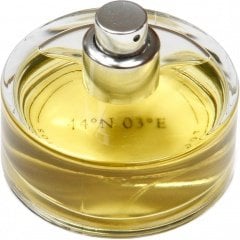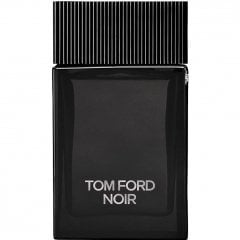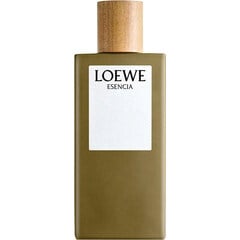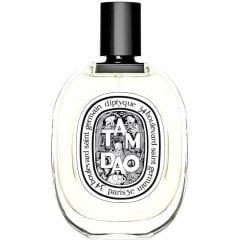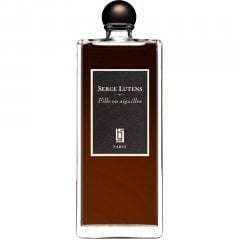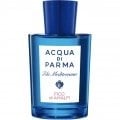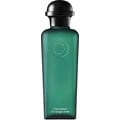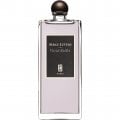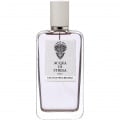
Greysolon
Rezensionen
Südfrankreich destilliert
Wie auch Winzer das Terroir ihrer Weinberge rühmen ihrem Wein spezielle Noten und Aromen hinzuzufügen, so verwenden Richard Lüscher Britos dieses Konzept um einen besonderen Bezug ihrer Terroir Parfums zu Regionalität zu unterstreichen. Jeder Duft der Linie ist nach den geographischen Koordinaten benannt, welche die konkrete Herkunftsregion ihrer natürlichen Inhaltsstoffe benennen. Im Falle von 44° 03°E soll das Terroir Südfrankreichs verkörpert sein.
44°N 03°E beinhaltet wilden Lavendel wie auch Wacholder und Schwarzkiefer, die in dieser Region heimisch sind. Es ist ein schöner und unkomplizierter Duft, kreiert von, wie ich angenehme überrascht war zu erfahren, Andy Tauer. Es eröffnet mit Zitrus und einer leichten Bonbonsüße, die mir die „glasierte Kastanie“ zu sein scheint. Nicht lange und der Lavendel tritt hinzu, wird zunehmend zur dominanten Note. Während der Zitrus elegant in den Hintergrund rückt, treten Pinie und Wacholder auf und füllen den freien Raum in nahtloser Verbindung mit dem Lavendel – ganz und gar ohne Makel. Sollte irgendein Aspekt von Lavendel und Nadelholz eine Gemeinsamkeit haben, Tauer hat sie gefunden. Die subtile Schärfe von Lavendel findet ihre Entsprechung in der Kiefer, während ihre harzige Natur wiederum im Lavendel ihren Widerhall findet. Diese Verschmelzung ist wirklich wunderbar.
Allerdings gibt es eine geruchliche Komponente in Verbindung mit Natur-Parfümerie, die so gar nicht mein Fall ist und auch in 44°N 03°E geringfügig wahrnehmbar ist. Mitunter ist die saftige, harzige Note natürlicher Pflanzenextrakte von einer fast kampferartigen Verbindung geprägt, welche den ganzen Duft überstrahlt. Es erinnert an den Besuch eines Reformhauses. Dort, direkt vor der Auslage mit Naturkosmetik und Düften ist der Geruch, den zu beschreiben ich hier versuche, präsent. Doch in 44°N 03°E ist nur ein Hauch davon bemerkbar. Da Lavendel und Kiefer ihre Hoheit behaupten, ist dieser Geruch bereits ein Stück von Haut entfernt, wenn überhaupt wahrnehmbar, nicht mehr bemerkbar. Von diesem winzigen Makel abgesehen, ist 44°N 03°E ein wunderbarer Duft.
Ein großes Dankeschön an Mia, die uns US-Parfumos mit Proben für ein Wanderpaket versorgt hat!
44°N 03°E beinhaltet wilden Lavendel wie auch Wacholder und Schwarzkiefer, die in dieser Region heimisch sind. Es ist ein schöner und unkomplizierter Duft, kreiert von, wie ich angenehme überrascht war zu erfahren, Andy Tauer. Es eröffnet mit Zitrus und einer leichten Bonbonsüße, die mir die „glasierte Kastanie“ zu sein scheint. Nicht lange und der Lavendel tritt hinzu, wird zunehmend zur dominanten Note. Während der Zitrus elegant in den Hintergrund rückt, treten Pinie und Wacholder auf und füllen den freien Raum in nahtloser Verbindung mit dem Lavendel – ganz und gar ohne Makel. Sollte irgendein Aspekt von Lavendel und Nadelholz eine Gemeinsamkeit haben, Tauer hat sie gefunden. Die subtile Schärfe von Lavendel findet ihre Entsprechung in der Kiefer, während ihre harzige Natur wiederum im Lavendel ihren Widerhall findet. Diese Verschmelzung ist wirklich wunderbar.
Allerdings gibt es eine geruchliche Komponente in Verbindung mit Natur-Parfümerie, die so gar nicht mein Fall ist und auch in 44°N 03°E geringfügig wahrnehmbar ist. Mitunter ist die saftige, harzige Note natürlicher Pflanzenextrakte von einer fast kampferartigen Verbindung geprägt, welche den ganzen Duft überstrahlt. Es erinnert an den Besuch eines Reformhauses. Dort, direkt vor der Auslage mit Naturkosmetik und Düften ist der Geruch, den zu beschreiben ich hier versuche, präsent. Doch in 44°N 03°E ist nur ein Hauch davon bemerkbar. Da Lavendel und Kiefer ihre Hoheit behaupten, ist dieser Geruch bereits ein Stück von Haut entfernt, wenn überhaupt wahrnehmbar, nicht mehr bemerkbar. Von diesem winzigen Makel abgesehen, ist 44°N 03°E ein wunderbarer Duft.
Ein großes Dankeschön an Mia, die uns US-Parfumos mit Proben für ein Wanderpaket versorgt hat!
Noir or Soir?
We often speak of the aesthetics of perfume and music as being analogous. The two arts even share descriptive terms. For instance, we speak of notes and accords (or chords). There is also the analogy of the scent pyramid functioning as a complex triad of notes just like a musical chord, arpeggio or even an entire composition. I would like to add one more item to the list of analogies: the similarities of naming a piece music or a perfume. One could go into some depth on this topic but I’ll stick to the genre of musical works known as “character pieces”. Don’t worry, this isn’t a music lesson! I’ll get around to how this applies to Tom Ford Noir very soon.
In music, character pieces have titles meant to evoke a general mood, feeling or character. If you’ve ever been to a classical concert or taken music lessons as a child you’ve probably heard of these titles: preludes, caprices, nocturnes, impromptus, arabesques. These names have nothing to do with a specific musical form, like a symphony or a sonata. They are simply meant to place the listener in a broadly understood musical environment.
By analogy, character pieces also exist in perfumery. Think how often the words soir, nuit, sensuelle, fraiche, sport and noir are used in the name of a perfume. These words don’t tell us the specific genre of a fragrance (like a chypre or oriental) nor do they tell us the dominant ingredient or note of the scent. The “character piece” word in the name of the fragrance simply indicates a general mood or enviroment the perfumer would like us to experience while wearing a fragrance: Allure Sensuelle, Rose de Nuit, or Tom Ford Noir. Unfortunately, Tom Ford Noir is far from what I’d describe as a “noir" character piece.
Our present day usage of the word “noir”, with its strong connection to French and American cinema of the 40's and 50's, has come to imply a sensual, moody or mysterious quality. Think of the movie Double Indemnity with Fred McMurray and Barbara Stanwick and how they are drawn to each other by a dark, lascivious obsession that is dangerously beyond their control. With that in mind, noir doesn’t simply refer to some general tonality or feeling of darkness. I imagine a stereotypically noir perfume as a character piece consisting of notes such as smoky vetivers, tobacco, patchouli, dark florals, animalics or perhaps bitter, pungent herbs and spices. Notes that would give a carnal edginess to an overall dark tonality to create a sense of intrigue and desire.
In fact, Tom Ford Noir has some of those darker, edgier elements listed in its notes: Civet, black pepper, patchouli. But those notes, rather than providing the elements of the noir character piece, simply supply a pleasant depth and warmth to the fragrance. It is a perfume ruled by homogenous, dark florals (another "noir" opportunity missed) tempered by an equal dose of amber and vanilla. Kind of a lite version of Noir de Noir from Tom Ford’s luxury line which, by contrast, has a dark, decadent, sensual noir quality.
Honestly, Tom Ford Noir is not a bad fragrance. It’s warm, pleasant, comfortable, and conventional. In a way, I can understand its attraction. I liked it enough that, while testing it, I wore it to a concert last night. I felt certain it would not bother those in the audience seated next to me. It was nice and mannerly; not noir.
So why all the fuss about calling it “noir”? Because last night I could have picked from many other fragrances that would have been just as nice, conventional and mannerly. However, some of those fragrances might have had the descriptive word “soir” in the title. Soir, with its connotation of a pleasurably warm and gentle evening, seems more fitting to the truly benign character of Tom Ford Noir.
In music, character pieces have titles meant to evoke a general mood, feeling or character. If you’ve ever been to a classical concert or taken music lessons as a child you’ve probably heard of these titles: preludes, caprices, nocturnes, impromptus, arabesques. These names have nothing to do with a specific musical form, like a symphony or a sonata. They are simply meant to place the listener in a broadly understood musical environment.
By analogy, character pieces also exist in perfumery. Think how often the words soir, nuit, sensuelle, fraiche, sport and noir are used in the name of a perfume. These words don’t tell us the specific genre of a fragrance (like a chypre or oriental) nor do they tell us the dominant ingredient or note of the scent. The “character piece” word in the name of the fragrance simply indicates a general mood or enviroment the perfumer would like us to experience while wearing a fragrance: Allure Sensuelle, Rose de Nuit, or Tom Ford Noir. Unfortunately, Tom Ford Noir is far from what I’d describe as a “noir" character piece.
Our present day usage of the word “noir”, with its strong connection to French and American cinema of the 40's and 50's, has come to imply a sensual, moody or mysterious quality. Think of the movie Double Indemnity with Fred McMurray and Barbara Stanwick and how they are drawn to each other by a dark, lascivious obsession that is dangerously beyond their control. With that in mind, noir doesn’t simply refer to some general tonality or feeling of darkness. I imagine a stereotypically noir perfume as a character piece consisting of notes such as smoky vetivers, tobacco, patchouli, dark florals, animalics or perhaps bitter, pungent herbs and spices. Notes that would give a carnal edginess to an overall dark tonality to create a sense of intrigue and desire.
In fact, Tom Ford Noir has some of those darker, edgier elements listed in its notes: Civet, black pepper, patchouli. But those notes, rather than providing the elements of the noir character piece, simply supply a pleasant depth and warmth to the fragrance. It is a perfume ruled by homogenous, dark florals (another "noir" opportunity missed) tempered by an equal dose of amber and vanilla. Kind of a lite version of Noir de Noir from Tom Ford’s luxury line which, by contrast, has a dark, decadent, sensual noir quality.
Honestly, Tom Ford Noir is not a bad fragrance. It’s warm, pleasant, comfortable, and conventional. In a way, I can understand its attraction. I liked it enough that, while testing it, I wore it to a concert last night. I felt certain it would not bother those in the audience seated next to me. It was nice and mannerly; not noir.
So why all the fuss about calling it “noir”? Because last night I could have picked from many other fragrances that would have been just as nice, conventional and mannerly. However, some of those fragrances might have had the descriptive word “soir” in the title. Soir, with its connotation of a pleasurably warm and gentle evening, seems more fitting to the truly benign character of Tom Ford Noir.
Die Essenz der Eleganz
Escencias Aufzählung der Duftnoten liest sich wie eine Küchenspüle voller Zutaten, doch sie fügen sich zusammen zu einem der schönsten und elegantesten Aromatic Fougères meiner Sammlung...
Jetzt könnte man einwenden: "Moment mal! Fougère? Wirklich? Schau auf die Noten: Leder, Eichenmoos, Moschus, Blumiges. Bist Du sicher, dass es kein Chypre ist?"
Nun, es hat auch jede Menge Fougère-Zutaten: Lavendel, Geranium und grüne Noten wie Muskatellersalbei und den nervigen Übergang: Eichenmoos.
Also, Chypre oder Fougère? Wer dominiert die Schlacht der Zutaten?
Es ist Fougère, mit einer Nasenlänge voraus (Bitte "Groan" und "Eyeroll" einfügen).
Lavendel, Estragon und andere grüne Noten überwiegen, ebenso wie die aromatischen Elemente von Kiefer und Tanne. Obwohl also technisch gesehen Esencia als Chypre eingestuft werden könnte, ist die Dominanz jener grünen Noten von der Art, dass die Nase aus Esencia ein klassisches Fougère liest. Darüberhinaus tragen sich Leder und der animalische Akkord, die uns auf Chypre einstimmen könnten, nicht wirklich ein. Wenn ich mich mit der Nase genau neben dem Handgelenk auf den Geruch von Leder einstimme kann ich dessen braunen, polierten Duft wahrnehmen. Jedoch ist eine große Enttäuschung absehbar, wenn man eine Lederjacke in der Flasche erwartet - basierend auf Esencia's gestanzter Lederkappe und der Klassifikation als Chypre. Die kiefergrüne, wie ein Kieferzapfen geformte Flasche kommt der Wahrheit der Werbung nahe. Auch andere Reviewer blieben an diesem Unterschied hängen. Sogar jene, die es ein Chypre nennen bentzen Attribute wie "aromatisch-krautiges Chypre" oder "Fougère-Chypre-Hybrid". Velleicht sind das gute Kompromisse.
Wie auch immer, ich bleibe bei meinem originären Statement: Esencia ist ein schöner, eleganter Duft. Ich wertschätze ihn genauso wie Fou d'Absinthe mit dem es viele Eigenschaften teilt. (Nebenbei, ich sage nicht, dass es wie Fou d'Anbsinthe riecht). Eine dieser gemeinsamen Eigenschaften ist eine leicht medizinisch/likörartige Note die - im Fall von Esencia - eher Anis als Abinth ist. Fou d'Absinthe bringt ebenfalls Kieferakkorde ins Bewußtsein, die ich wiederholt als prominent in Esencia erwähnt habe.
Esencia mag 25 Jahre alt sein, aber es balanciert seine klassische Struktur - was auch immer für ein Fougère-Chypre-Hybrid es ist - mit einer Modernität aus, die erst noch verblassen muss.
Übersetzung von Apicius
Jetzt könnte man einwenden: "Moment mal! Fougère? Wirklich? Schau auf die Noten: Leder, Eichenmoos, Moschus, Blumiges. Bist Du sicher, dass es kein Chypre ist?"
Nun, es hat auch jede Menge Fougère-Zutaten: Lavendel, Geranium und grüne Noten wie Muskatellersalbei und den nervigen Übergang: Eichenmoos.
Also, Chypre oder Fougère? Wer dominiert die Schlacht der Zutaten?
Es ist Fougère, mit einer Nasenlänge voraus (Bitte "Groan" und "Eyeroll" einfügen).
Lavendel, Estragon und andere grüne Noten überwiegen, ebenso wie die aromatischen Elemente von Kiefer und Tanne. Obwohl also technisch gesehen Esencia als Chypre eingestuft werden könnte, ist die Dominanz jener grünen Noten von der Art, dass die Nase aus Esencia ein klassisches Fougère liest. Darüberhinaus tragen sich Leder und der animalische Akkord, die uns auf Chypre einstimmen könnten, nicht wirklich ein. Wenn ich mich mit der Nase genau neben dem Handgelenk auf den Geruch von Leder einstimme kann ich dessen braunen, polierten Duft wahrnehmen. Jedoch ist eine große Enttäuschung absehbar, wenn man eine Lederjacke in der Flasche erwartet - basierend auf Esencia's gestanzter Lederkappe und der Klassifikation als Chypre. Die kiefergrüne, wie ein Kieferzapfen geformte Flasche kommt der Wahrheit der Werbung nahe. Auch andere Reviewer blieben an diesem Unterschied hängen. Sogar jene, die es ein Chypre nennen bentzen Attribute wie "aromatisch-krautiges Chypre" oder "Fougère-Chypre-Hybrid". Velleicht sind das gute Kompromisse.
Wie auch immer, ich bleibe bei meinem originären Statement: Esencia ist ein schöner, eleganter Duft. Ich wertschätze ihn genauso wie Fou d'Absinthe mit dem es viele Eigenschaften teilt. (Nebenbei, ich sage nicht, dass es wie Fou d'Anbsinthe riecht). Eine dieser gemeinsamen Eigenschaften ist eine leicht medizinisch/likörartige Note die - im Fall von Esencia - eher Anis als Abinth ist. Fou d'Absinthe bringt ebenfalls Kieferakkorde ins Bewußtsein, die ich wiederholt als prominent in Esencia erwähnt habe.
Esencia mag 25 Jahre alt sein, aber es balanciert seine klassische Struktur - was auch immer für ein Fougère-Chypre-Hybrid es ist - mit einer Modernität aus, die erst noch verblassen muss.
Übersetzung von Apicius
4 Antworten
Hoping to find balance
I’ve worn Tam Dao a number of times over the past year and have been unsure how I felt about it. Finally, after wearing it again today, I’ve come to the conclusion that it’s a very fine, well composed fragrance and deserves its generally recognized status as such. However, similar to Drseid's assessment, I don’t love it. It just doesn’t speak to me or seem suit my personality. But my absence of passion for Tam Dao doesn’t mean it lacks true quality. I believe Tam Dao is a great example of an elegant woody oriental. Sandalwood is the key player and all the other notes homogenize with it in a way that highlight its facets: from woody to sweet to spicy to resinous. All those elements whirl and swirl together to create a fragrance that is widely considered to be one of the best sandalwood perfumes
For all those accolades, Tam Dao still doesn't register with me personally. However, just because it doesn't suit my tastes Tam Dao is mediocre
Reconciling the dichotomy of our intuitive, emotional reactions with intellectual analysis is difficult when speaking of perfume. In critiquing other arts, we can point to, for instance, the character development in a novel that coincides so well with the plot structure that the characters leap off the page. Yet there is still that certain something we don't enjoy about the story. Or the metrical stress of a poem that matches the syllabic structure of the words so perfectly the rhythmic impact of the verse drives each stanza forward. Yet, to us, the words are dead on the page. As I said, this kind of objective analysis is difficult to do with a fragrance.
And when we can't reconcile our gut reaction with the obvious structural quality of the work, all we can do is hope the ineffable qualities that imbue it with a magic others see will someday touch us.
That’s why I keep coming back to Tam Dao. Perhaps one day my pallete of experiences will have expanded in a way that I can experience the full beauty of this fragrance in a more personal and emotional way. For now I simply know Tam Dao is an excellent work.
For all those accolades, Tam Dao still doesn't register with me personally. However, just because it doesn't suit my tastes Tam Dao is mediocre
Reconciling the dichotomy of our intuitive, emotional reactions with intellectual analysis is difficult when speaking of perfume. In critiquing other arts, we can point to, for instance, the character development in a novel that coincides so well with the plot structure that the characters leap off the page. Yet there is still that certain something we don't enjoy about the story. Or the metrical stress of a poem that matches the syllabic structure of the words so perfectly the rhythmic impact of the verse drives each stanza forward. Yet, to us, the words are dead on the page. As I said, this kind of objective analysis is difficult to do with a fragrance.
And when we can't reconcile our gut reaction with the obvious structural quality of the work, all we can do is hope the ineffable qualities that imbue it with a magic others see will someday touch us.
That’s why I keep coming back to Tam Dao. Perhaps one day my pallete of experiences will have expanded in a way that I can experience the full beauty of this fragrance in a more personal and emotional way. For now I simply know Tam Dao is an excellent work.
3 Antworten

 Greysolon
Greysolon